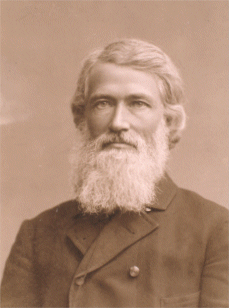Combinationalism: Difference between revisions
No edit summary |
No edit summary |
||
| (8 intermediate revisions by the same user not shown) | |||
| Line 1: | Line 1: | ||
{{Region icon Teleon}} | {{Region icon Teleon}} | ||
{{WIP}} | {{WIP}} | ||
[[File:Sars Johan Ernst.gif|thumb|[[Waldrich|Waldish]] philosopher [[Knut Arvidsen]] is widely credited with | [[File:Sars Johan Ernst.gif|thumb|[[Waldrich|Waldish]] philosopher [[Knut Arvidsen]] is widely credited with laying the philosophical foundation for combinationalism.]] | ||
'''Combinationalism''' is a {{wp|political philosophy|political}} and {{wp|economic ideology|economic}} {{wp|ideology}} that rose to prominence in the [[Northern world (Teleon)|Northern world]] during the early 20th century. Combinationalism is based around the [[Dual mandate | '''Combinationalism''' is a {{wp|political philosophy|political}} and {{wp|economic ideology|economic}} {{wp|ideology}} that rose to prominence in the [[Northern world (Teleon)|Northern world]] during the early 20th century. Combinationalism is based around the [[Dual mandate principle|dual mandate principle]], which claims that the purpose of the state is to maximize both {{wp|Liberty|individual liberty}} and {{wp|Social justice|social justice}}. Combinationalists argue that the dual mandate obligates policymakers to seek out the most efficient and unintrusive means of solving socioeconomic issues, and to avoid {{wp|Market intervention|market intervention}} altogether when other institutions such as churches, families, and community organizations are better able to provide solutions. Adherents of the movement are diverse in their views, but generally support {{wp|Limited government|limited government}}, {{wp|Right to property|property rights}}, {{wp|Subsidiarity|subsidiarity}}, {{wp|Free trade|free trade}}, {{wp|Familialism|familialism}}, {{wp|Optimal tax|optimal taxation}}, and {{wp|Welfare reform|welfare reform}}. | ||
Combinationalism developed in [[Waldrich]] during the late 19th century. The philosopher [[Knut Arvidsen]] is widely credited with laying the ideology's philosophical foundation with his 1887 essay ''[[Property and Justice]]'', which coined much of the terminology associated with combinationalist discourse. After the [[Recession of 1924]], combinationalist movements entered the political mainstream in several countries in [[TBA]] as a {{wp|Center-right politics|center-right}} solution to the {{wp|Social question|social question}}. [[TBA]] became the first nation with an openly combinationalist government in 1930, when [[TBA]] and his [[TBA Party]] rose to power in the aftermath of the [[TBA]]. Combinationalism spread to [[Calesia]] after the [[Great War (Teleon)|Great War]], when it was embraced by {{wp|Christian democracy|Gregorian democratic}} parties to serve as a model for post-war reconstruction. Waldish [[Lawspeaker of Waldrich|Lawspeaker]] [[Karl Fjellheim]] was an early proponent of Calesian combinationalism, enacting a series of economic and social reforms during the 1940s that became known internationally as the [[Waldish model]]. | |||
Political scientists generally categorize combinationalism as a {{wp|Center-right politics|center-right}} ideology, occupying a middle ground between {{wp|Market intervention|interventionist}} {{wp|Ordoliberalism|ordoliberalism}} and ''{{wp|Laissez-faire|laissez-faire}}'' {{wp|Classical liberalism|classical liberalism}}. However, combinationalism remains difficult to | Political scientists generally categorize combinationalism as a {{wp|Center-right politics|center-right}} ideology, occupying a middle ground between the {{wp|Market intervention|interventionist}} approach of {{wp|Ordoliberalism|ordoliberalism}} and the ''{{wp|Laissez-faire|laissez-faire}}'' approach of {{wp|Classical liberalism|classical liberalism}}. However, combinationalism remains difficult to classify due to the significant ideological diversity between different movements. As a result, combinationalism has often been referred to as a “big-tent” ideology unified only by adherence to the dual mandate principle. | ||
==Etymology== | ==Etymology== | ||
==History== | ==History== | ||
==Philosophy== | ==Philosophy== | ||
===Dual mandate | ===Dual mandate principle=== | ||
===Public stewardship=== | ===Public stewardship=== | ||
===Subsidiarity=== | ===Subsidiarity=== | ||
==Notable proponents== | ==Notable proponents== | ||
==Variants== | ==Variants== | ||
===Classical combinationalism=== | |||
===Combinational liberalism=== | |||
===Integral combinationalism=== | |||
==Parties and movements== | ==Parties and movements== | ||
==Criticism and support== | ==Criticism and support== | ||
[[Category:Ideologies (Teleon)]] | [[Category:Ideologies (Teleon)]] | ||
Latest revision as of 03:31, 20 November 2024
This article is incomplete because it is pending further input from participants, or it is a work-in-progress by one author. Please comment on this article's talk page to share your input, comments and questions. Note: To contribute to this article, you may need to seek help from the author(s) of this page. |

Combinationalism is a political and economic ideology that rose to prominence in the Northern world during the early 20th century. Combinationalism is based around the dual mandate principle, which claims that the purpose of the state is to maximize both individual liberty and social justice. Combinationalists argue that the dual mandate obligates policymakers to seek out the most efficient and unintrusive means of solving socioeconomic issues, and to avoid market intervention altogether when other institutions such as churches, families, and community organizations are better able to provide solutions. Adherents of the movement are diverse in their views, but generally support limited government, property rights, subsidiarity, free trade, familialism, optimal taxation, and welfare reform.
Combinationalism developed in Waldrich during the late 19th century. The philosopher Knut Arvidsen is widely credited with laying the ideology's philosophical foundation with his 1887 essay Property and Justice, which coined much of the terminology associated with combinationalist discourse. After the Recession of 1924, combinationalist movements entered the political mainstream in several countries in TBA as a center-right solution to the social question. TBA became the first nation with an openly combinationalist government in 1930, when TBA and his TBA Party rose to power in the aftermath of the TBA. Combinationalism spread to Calesia after the Great War, when it was embraced by Gregorian democratic parties to serve as a model for post-war reconstruction. Waldish Lawspeaker Karl Fjellheim was an early proponent of Calesian combinationalism, enacting a series of economic and social reforms during the 1940s that became known internationally as the Waldish model.
Political scientists generally categorize combinationalism as a center-right ideology, occupying a middle ground between the interventionist approach of ordoliberalism and the laissez-faire approach of classical liberalism. However, combinationalism remains difficult to classify due to the significant ideological diversity between different movements. As a result, combinationalism has often been referred to as a “big-tent” ideology unified only by adherence to the dual mandate principle.